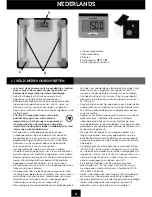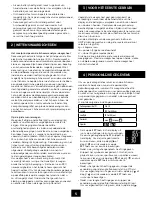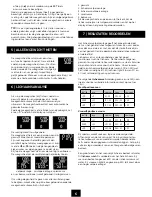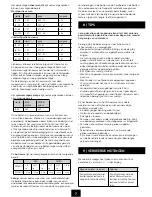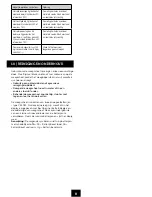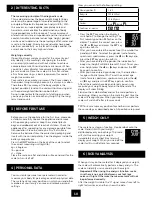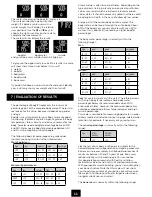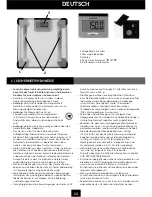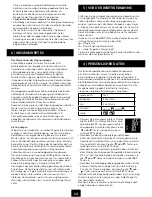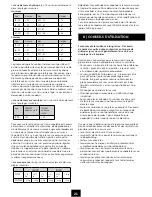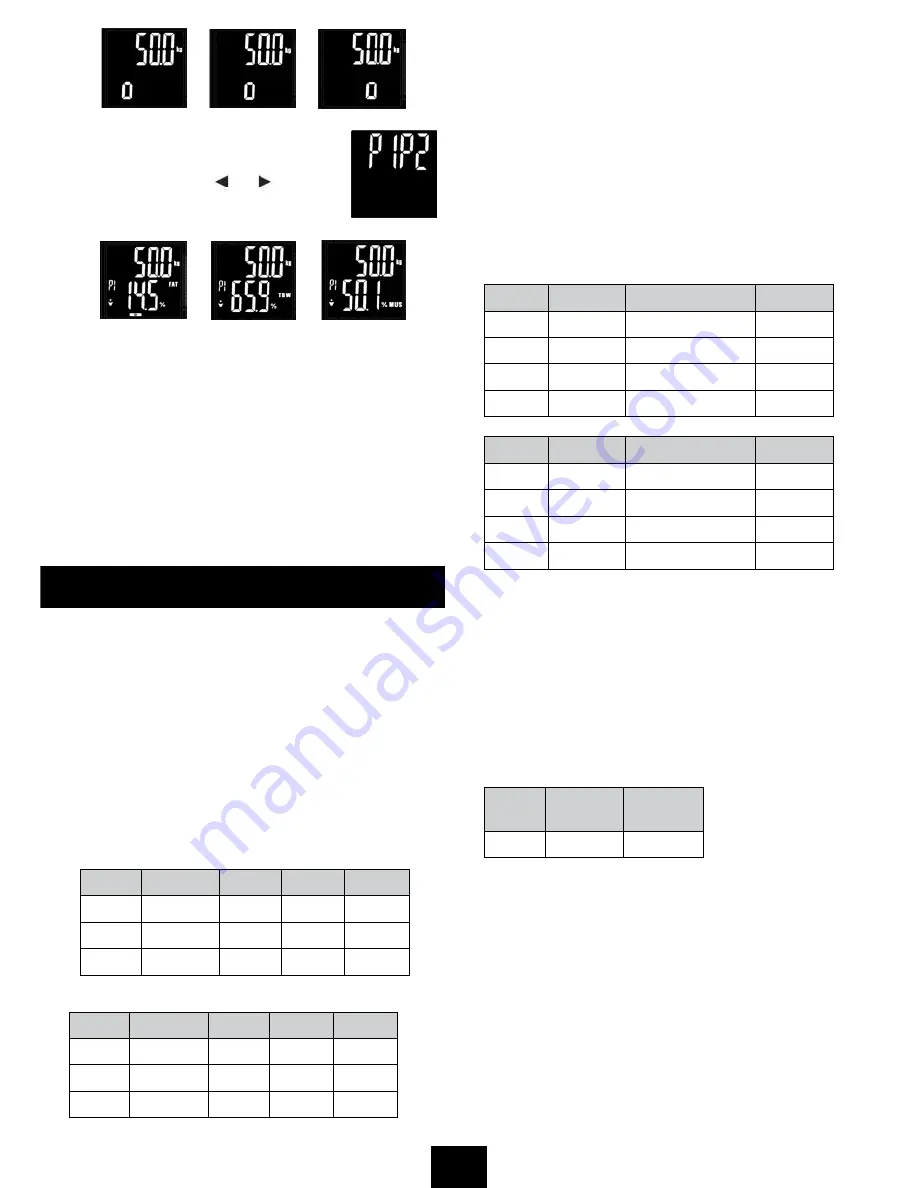
The scale is measuring the bodyfat, -water, etc.
The scale can identify a person by their
weight. If it detects more users with a
similar weight, it will display the relative
user positions. Use the
or
keys to
choose the right user. stay on the scale to
complete the measurement.
The scale will now display the results:
bodyfat
bodywater
muscle
and your bone mass will be shown in kilograms.
To give you the opportunity to see all the results, the scale
will show them three times before it turns off:
1. weight
2. bodyfat
3. bodywater
4. bodymuscle
5. bone mass
If you don’t choose a user or when the scale can’t identify
you, it will only show your weight and then turn off.
7 | EvALUATIoN oF RESULTS
The percentage of bodyfat represents the in terms of
percentage part of the complete body weight. There is no
real advise for this value, because it depends on gender
and age.
Bodyfat is very important for your body, to ensure good
functioning. It protects organs, hinges, regulates the body
temperature, stores vitamins and acts as a reserve for the
body. Females need a bodyfat percentage between 10%
and 13%. Males need a bodyfat percentage between 2%
and 5%, with exception of sports people.
The following body fat percentages are guide values
(contact your physician for further information).
Man/ Sportsman
age
low
normal
high
very high
< 39
< 8
8.1 - 20
20.1 - 25
> 25
40-59
< 11
11.1 - 22
22.1 - 28
> 28
> 59
< 13
13.1 - 25
25.1 - 30
> 30
Woman/ Sportswoman
age
low
normal
high
very high
< 39
< 21
21.1 - 33
33.1 - 39
> 39
40-59
< 23
23.1 - 34
34.1 - 40
> 40
> 59
< 24
24.1 - 36
36.1 - 42
> 42
a lower value is often found in athletes. Depending on the
type of sports, training intensity and physical constitution,
values may result which are below the recommended
values states. It should, however, be noted that there could
be a danger to health in the case of extremely low values.
a large part of the human body contains water. This
bodywater can be found through the entire body. about
60% of the bodymass consists of water with men. with
women this is about 55% (caused by a higher bodyfat
percentage).
The body water percentage is normally within the
following ranges:
Man
age
poor
good
very good
10 - 15
< 58
58.1 - 72
> 72
16 - 30
< 53
53.1 - 67
> 67
31 - 60
< 47
47.1 - 61
> 61
61 - 100
< 42
42.1 - 56
> 56
Woman
age
poor
good
very good
10 - 15
< 57
57.1 - 67
> 67
16 - 30
< 47
47.1 - 57
> 57
31 - 60
< 42
42.1 - 52
> 52
61 - 100
< 37
37.1 - 47
> 47
Body fat contains relatively little water. Therefore persons
with a high body fat percentage have body water
percentages below the recommended values. with
endurance athletes, however, the recommended values
could be exceeded due to low fat percentages and high
muscle percentage.
This scale is unsuitable for measuring body water in order
to draw medical conclusions concerning age-related water
retention, for example. If necessary ask your physician.
The
muscle percentage
is normally within the following
ranges:
age
Man
healthy
woMan
healthy
10-99
> 40
> 34
like the rest of our body, our bones are subject to the
natural development, degeneration and ageing processes.
Bone mass increases rapidly in childhood and reaches its
maximum between 30 and 40 years of age. Bone mass
reduces slightly with increasing age. You can reduce
this degeneration somewhat with healthy nutrition
(particularly calcium and vitamin D) and regular exercise.
with appropriate muscle building, you can also strengthen
your bone structure. note that this scale will not show
you the calcium content of your bones, but will measure
the weight of all bone constituents (organic substances,
inorganic substances and water).
The
bone mass
is normally within the following ranges:
11




